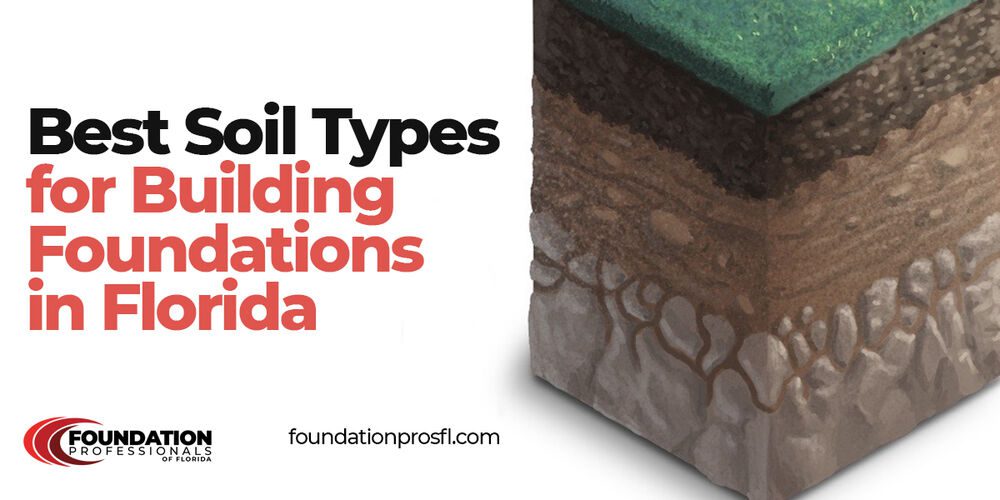When it comes to building foundations in Florida – or anywhere for that matter – all soil types are not created equal. Some types of soil are excellent for building foundations, others are OK, and some are to be avoided at all costs.
Before we get into the details, let’s take a look at what foundation soil is precisely…
What is foundation soil?
When people hear the word “soil,” they typically think of loose, surface soil. This is the soil that both structurally supports and provides nutrients and water to plants.
But that’s just one type of soil.
There are a variety of soil types, each with different physical and chemical properties. Some are excellent for building foundations, while others are unsuitable.
You see…
Soil contains both organic and inorganic particles. However, it’s the size of the inorganic particles, and the proportion they’re found determines a soil’s texture.
When it comes to soil and building foundations, the texture of the soil varies according to depth and matters a lot.
Three different foundation soil types and how moisture affects them
Of course, the soil underneath a building’s foundation varies according to its geographic location, but we can say that there are three main soil types: sandy, sandy loam, and clay. Sandy soil has the coarsest texture followed by sandy loam, and then finally, clay, the soil with the finest texture.
Because these soils have different textures, moisture doesn’t affect them in the same way. This is important because finer-textured expansive soil expands and contracts significantly over the course of a year due to seasonal weather changes. This puts a lot of stress on a foundation. For more information about this, see Top 5 Causes of Foundation Issues.
Clay soil
Clay soil is the finest textured soil. It expands significantly as it absorbs water during rainy seasons and then shrinks as it dries out during hot, dry seasons, it’s very likely to cause any foundation built on top of it to crack, shift, or heave. Clay soil is prevalent in the Midwestern United States.
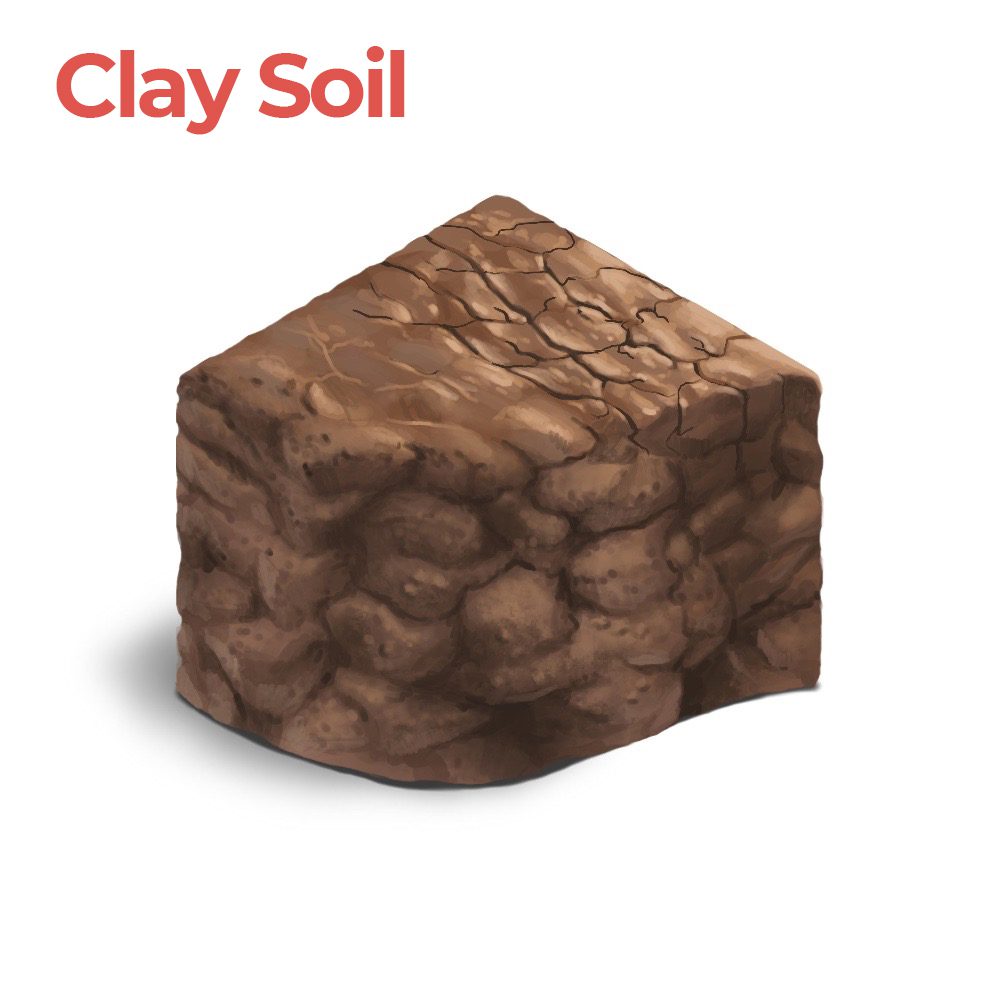
Sandy soil
Sandy soil is the coarsest foundation soil, and water goes right through it. In other words, it doesn’t absorb water, and this is why it doesn’t expand or shrink. Of course, it has its own set of concerns, such as erosion and scouring. Sandy soil is prevalent in South Florida and other coastal regions.
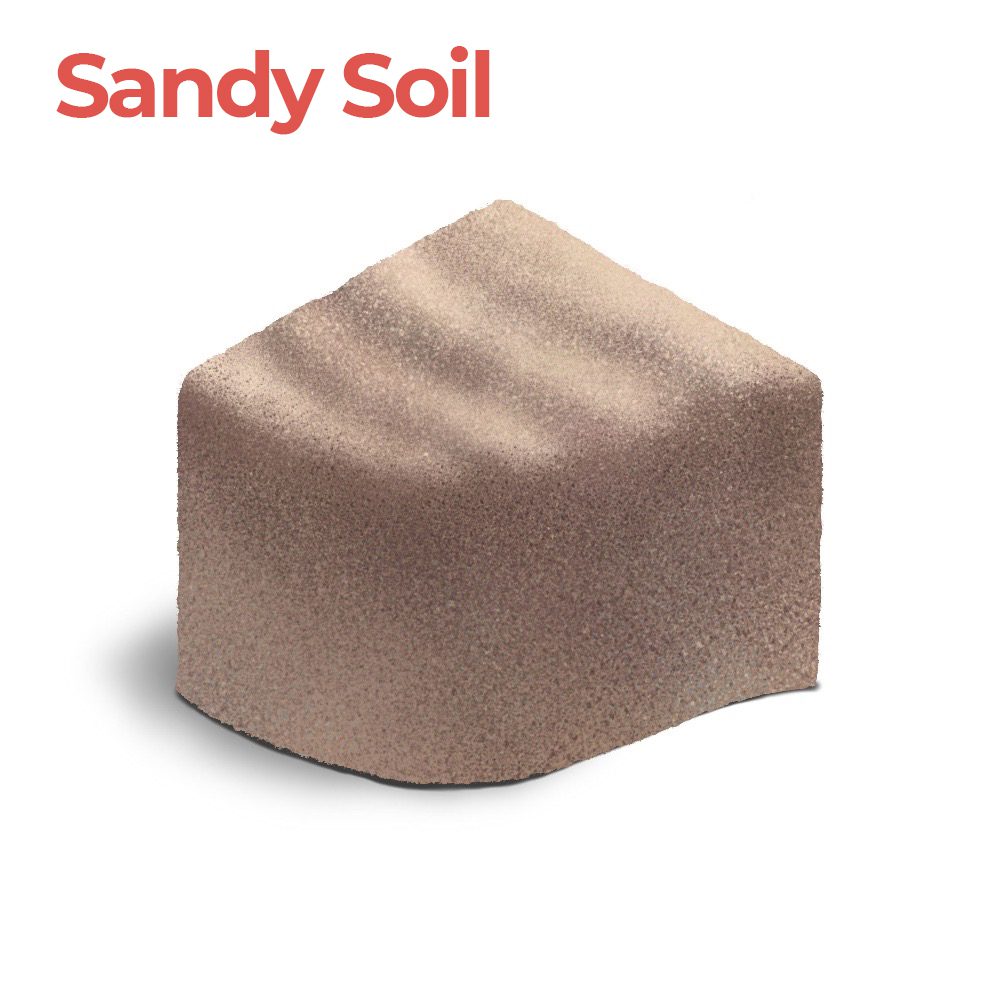
Sandy loam soil
Sandy loam soil is a medium textured soil made up of sand, silt, and clay. It’s relatively stable and doesn’t significantly expand or contract as environmental moisture levels go up and down. The main problem with sandy loam soil is there’s a chance of erosion. If this happens, you could end up with foundation problems.
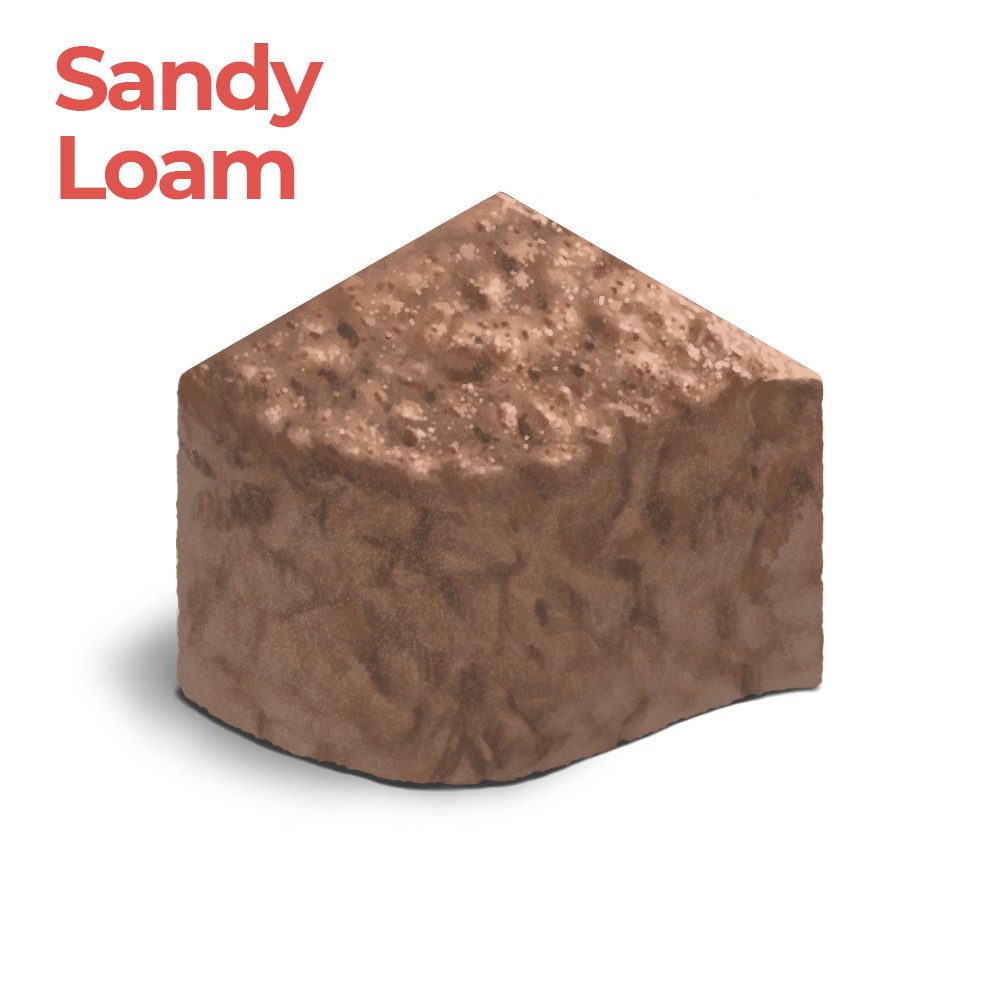
So, a soil’s ability to properly support a foundation is related to its texture. FInely textured soils like clay perform poorly, while coarse sandy soil performs well.
Soil components and their behavior under various conditions
We’ve already talked a bit about how finely textured clay soil expands and contracts when exposed to water while coarse, sandy soil doesn’t absorb water at all. But that doesn’t mean that coarse, sandy soil will never cause any problems for your foundation. (If you haven’t already done so, please take the time to read our article on the Top 5 Causes Of Foundation Issues. It contains additional information that isn’t covered in this article.)
So, let’s talk briefly about something called liquefaction.
When you apply pressure – for example, the shaking during an earthquake – to moisture-saturated sandy soil that hasn’t been well-compacted, causes the soil to lose its strength. When this happens, the soil starts behaving like a liquid and turns into something like quicksand. If this occurs under the foundation of a building, it can cause significant damage.
You can see the process here in this short video. It’s just over a minute long.
Now, all soils don’t react this way when exposed to pressure. But, loose sandy soil compresses under pressure, and while this might sound like a good thing, it isn’t if the loose soil is saturated by moisture. As seen in the video above, when the dish containing the sand is tapped, the grains of sand lose contact with one another and water moves into the spaces between them. The result is a liquified mess.
Imagine if there’s a building foundation on top of that. There’s going to be significant damage.
Liquefaction is usually associated with earthquakes. However, the vibrations caused by nearby construction can also cause sandy soil to shift or settle. It may not be as dramatic as earthquake-induced liquefaction, but it can still cause a lot of damage to a foundation.
Soil layers: Surface layer soil, the active zone, and bedrock
There are different types of soil underneath a building, and they all have the potential to affect your foundation in some way.
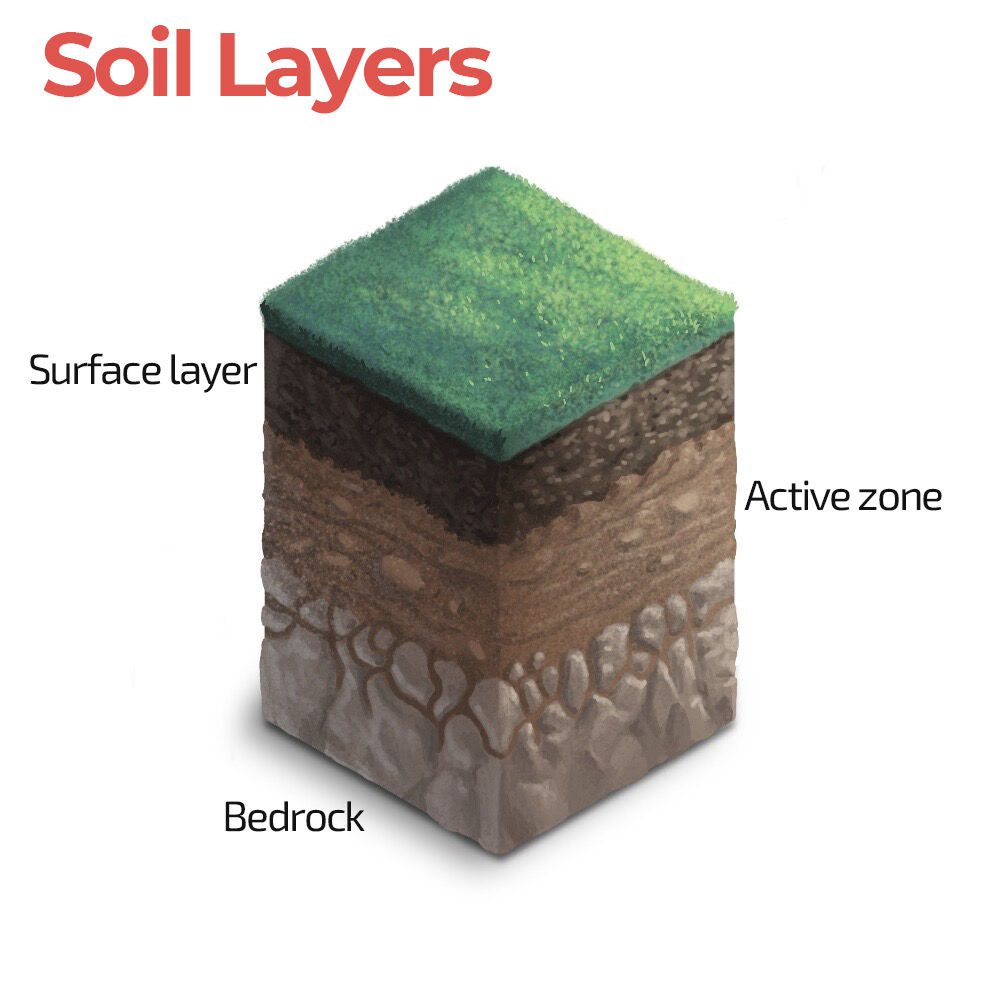
The soil near the surface is less stable and has less load-bearing capacity. As you go down, the soil’s load-bearing capacity increases until you get to bedrock, also known as the bearing stratum. Bedrock is rock or extremely dense soil, and it’s the most stable.
The active zone
The soil immediately around and under your house is called the “active zone.” This area can be anywhere from a few feet deep to over 30 feet deep, depending on your geographical location.
The active zone is important because this is the location of most foundation problems, including heave. Heave occurs when the soil under a foundation expands and pushes upward on the slab.
Soil in the active zone is also susceptible to changes in moisture content, temperature, etc.
For more information on the active zone, see Depth of Wetting and the Active Zone.
Foundation settlement and how it happens
Foundation settlement happens when the ground under a building loses its ability to support the building’s weight.
This can happen when the soil under a foundation dries out and shrinks when it gets wet and softens or if it hasn’t been adequately compacted, and the weight of the structure causes it to sink.
When the soil under a foundation dries out and shrinks
When the soil under a building dries out and shrinks, this can create voids under a foundation. If the foundation then settles into these voids, cracks and other problems can develop.
There are two main reasons soil dries out and shrinks…
- Hot, dry weather – During hot, dry seasons, clay soil especially is susceptible to drying and shrinkage.
- Large, mature trees with extensive root systems – In some cases, the root systems of large, mature trees can be larger than the canopy. If they get under a foundation, they can soak up moisture from the soil and cause shrinkage.
When the soil under a foundation hasn’t been adequately compacted
Failure to properly compact the soil before construction of the foundation is another cause of settlement. This is because a foundation must be placed on solid ground, and soil that hasn’t been compacted isn’t solid. It’s loose. If you put a foundation on top of it, it will compact over time by itself, yes. However, this settlement and compaction aren’t going to happen evenly, and when differential settlement occurs, it will cause problems in your foundation.
Foundations are important. Very important. A building’s structural integrity is only as good as its foundation, including the soil under it. For more information about foundation problems please check Top 5 Causes of Foundation Problems.

